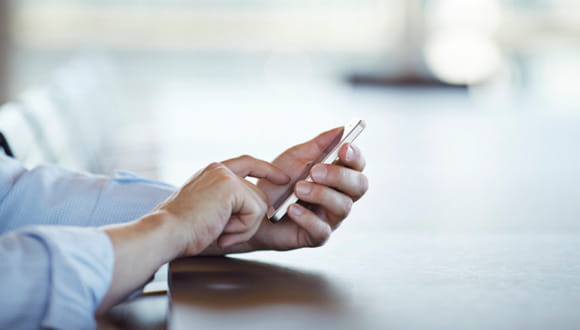Using your smartphone might not seem like physical activity, but — when it comes to the tendons and muscles in your hands and thumb — it may be more of a workout than you think.
We tap our thumbs to fire off texts and emails. We pinch our fingers together to zoom in on the weird face our dog is making in a photo. But mostly, we swipe. Facebook post after Facebook post, tweet after tweet, Instagram photo after Instagram photo — it’s easy to spend hours swiping our thumb down the length of our smartphone screens.
As a result, some of us develop pain in our thumbs, which is called texter’s thumb (or, more commonly, texting thumb).
What causes texting thumb?
“Texting thumb occurs when repetitive hand movements cause inflammation in the tendons of the thumb,” says Dr. Korsh Jafarnia, orthopedic surgeon at Houston Methodist. “These inflamed tendons then rub against the narrow tunnel in which they sit, causing thumb pain.”
Dr. Jafarnia says that the thumb joint is not meant to move rapidly in a repetitive manner, and the confined space in this joint makes matters worse.
Texting thumb might sound new, but the category of syndromes it falls into isn’t. From tendonitis to trigger thumb, orthopedic surgeons have been diagnosing versions of texting thumb for decades. Repetitive stress injuries that cause thumb pain are more formally called de Quervain's tenosynovitis.
“When it comes to texting, its thought that the frequent traveling of the thumb over the screen leads to tendon inflammation,” explains Dr. Jarfarnia. “This inflammation causes pain at the base of the thumb, which may extend to the lower arm.”
How do you know if you have texting thumb?
If you suspect you may have texting thumb, the first question to ask yourself is: How much have I been using my smartphone lately?
The reality is that you’re probably using your smartphone more than you think. If your device has the capability, check your screen time to get a reliable answer.
If you know the answer is ‘a lot’ — the next question to ask is: When does my thumb hurt?
“The pain from texting thumb is primarily present when the wrist is flexed or turned – as well as when forming a fist or grabbing,” says Dr. Jafarnia. “There can also be pain when direct pressure is applied to the area.”
If this sounds like you, it might be time to see an orthopedic specialist — who can determine whether you have de Quervain's tenosynovitis, as well as its severity.
How can you prevent texting thumb, or limit the severity of your symptoms?
If you’re looking to prevent texting thumb, Dr. Jafarnia recommends taking frequent breaks during lengthy smartphone sessions or using hands-free options when possible. It’s also a good idea to save that long email you need to write for when you’re able to type at your desk.
A repetitive stress injury like texting thumb can typically be treated conservatively. Dr. Jafarnia recommends easing thumb pain by:
- Limiting texting for a while
- Using audio commands
- Giving your thumb a rest
- Taking nonsteroidal anti-inflammatory drugs (NSAIDs)
- Thumb brace
But, some cases of de Quervain's tenosynovitis are more severe and may require steroid injections.
“If the condition persists despite steroid injections, surgery is used to release the pressure in the compartment,” says Dr. Jafarnia. “If untreated, the synovial sheaths will continue to thicken and degenerate. This can result in permanent damage and loss of grip strength and chronic pain.”








